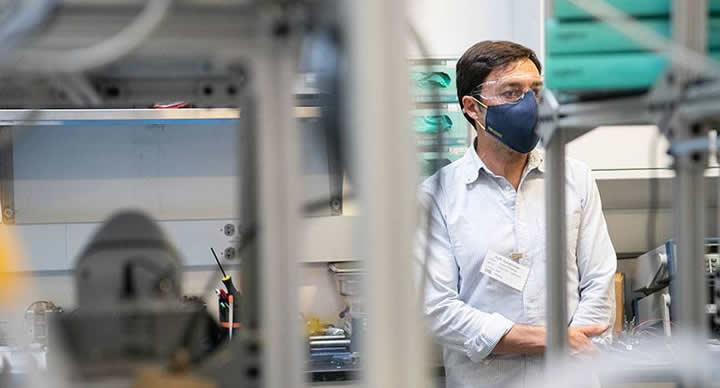Electric Hydrogen Partnership Hopes To Repeat Success With Renewable Hydrogen Technology

The National Renewable Energy Laboratory (NREL) and clean hydrogen company Electric Hydrogen have inked an agreement to develop high-performance electrolyzer components, helping to scale clean hydrogen and invent new opportunities for decarbonization. The three-year, $3.6 million collaboration will diagnose sources of degradation in commercial electrolysis cells and will validate advanced designs that use higher stack currents.
"Electric Hydrogen is engineering a high-performance product for water electrolysis—something that could scale up to significant commercial applications," said Guido Bender, NREL principal investigator on the project. "NREL has pretty unique hardware for testing electrolyzer stacks; this will allow us to characterize efficiency, durability, and performance across a range of operating conditions."
While the partnership will enable fundamentally new knowledge around renewable hydrogen technologies, other aspects feel like déjà vu: Several of the NREL and Electric Hydrogen team members were also behind the success of a long-lasting NREL-First Solar collaboration, which eventually commercialized cadmium telluride solar photovoltaics. The Electric Hydrogen collaboration hopes to repeat that remarkable progress by once again pushing the boundaries of upcoming technology, this time for renewable hydrogen, an energy resource that has the potential to decarbonize the highest polluting sectors.
"Our goal is to build industrial-scale electrolysis so that carbon-heavy industries can adapt," said David Eaglesham, co-founder and chief technology officer at Electric Hydrogen. "NREL has a history of helping next-up technologies scale to larger markets, and we are confident that this collaboration will achieve similar breakthroughs for renewable hydrogen."
The analogy to solar energy's rise runs deep: Like solar two decades ago, clean hydrogen is currently in profitability limbo, held back by the high capital costs of electrolyzers. However, the U.S. Department of Energy (DOE) hopes to change that with its Energy Earthshot for hydrogen, or "Hydrogen Shot" as it is commonly referred to—an initiative to reduce clean hydrogen costs by 80% to $1 per $1 kilogram in 1 decade. The Electric Hydrogen partnership plays into this strategy by addressing components where costs could be reduced.
"This partnership really creates value in multiple directions," Bender said. "While Electric Hydrogen develops its product, we develop our research capabilities to be more sensitive to device degradation, and, as a result, the entire renewable industry benefits as we achieve new benchmarks in cost and performance."
This project builds on more than a decade of research and capability investment at NREL by DOE's Hydrogen and Fuel Cell Technologies Office and supports DOE's H2@Scale vision for clean hydrogen across multiple applications and economic sectors. It will complement ongoing work through two NREL-led, multi-lab consortia: Hydrogen from Next-generation Electrolysis of Water (H2NEW), focused on materials and component integration, manufacturing, and scale-up to help support large industry deployment of durable, efficient, and low-cost electrolyzers, and HydroGEN, focused on accelerating development of less mature water-splitting materials and technologies to complement the work of H2NEW.
"There are a lot of parameters at-play in these cells," Bender said. "It is a very complex system, and we are excited to expand our knowledge and understanding through this project to support creating durable and efficient next-generation electrolyzers."
Multiple stakeholders and countries like the United States have set their sights on clean hydrogen because it is versatile and could provide a near-term path to carbon-free energy systems. Among its advantages, hydrogen could provide long-term storage, it can be used to produce sustainable fuels and chemicals, and it can support greater renewable integration. This collaboration with Electric Hydrogen will put the modest molecule on a fast track toward commercial applications.
Learn more about NREL's hydrogen and fuel cell research.
Comments (0)
This post does not have any comments. Be the first to leave a comment below.
Featured Product

